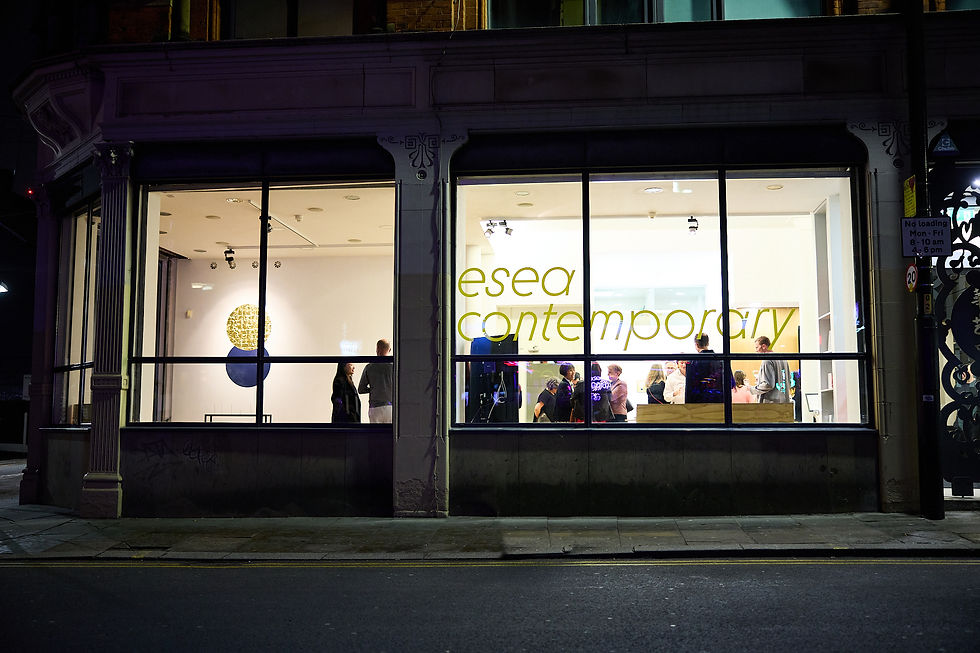Street Art and Graffiti - No Longer Frowned Upon?
- robertacollyer
- Mar 8, 2023
- 3 min read
Updated: Apr 15
How street art and graffiti are bringing positivity, hope, and regeneration to Britain’s towns and Cities.
Street art has divided opinion for decades and will no doubt continue to do so. However, appreciation for non-traditional art is unequivocally growing in urban cities. Street and mural art is often seen as the tamer twin of graffiti art, created in legal settings often through commission. These bright, bold, and creative pieces can potentially deliver a new sense of community and culture. Where previously street art was deemed unsightly and destructive, it is now often seen as an outlet of artistic expression which brings joy to grey and otherwise dull areas.
Over time, the creative value of street art has seen a rise in appreciation. An upsurge of mural art across the UK has shown that street art has the power to create a sense of place. It is nearly impossible to think of Brighton without recalling its colourful streets and vibrant artworks located on pubs, houses, and pavements. Closer to home, Ouseburn contains vast examples of graffiti, murals and street art which attracts visits from art lovers, young people, and tourists as well as being a familiar landmark to residents of the area. Evidently, what might not have once been appreciated is now positively transforming streets and cities as graffiti and street art are frequently associated with the character of a region.
Andrew Rothwell, culture and tourism manager at Newcastle City Council expanded on the Council’s plans to channel this form of creativity in ways which will improve the city and its cultural value. When asked his opinion on both graffiti and street art, Rothwell stated:
“Tagging is reflective of a societal need, and I worry about damming it… I think that people who tag and do graffiti covertly have creative instinct, personal ambitions, and frustrations… they need expression.” – Andrew Rothwell
Rothwell describes how the Council are moving forward, becoming more accepting of non-traditional art forms. Currently, a coalition of all the stakeholders in the cultural sector of the city is assessing the future development of ‘culture’ in Newcastle.
Interview with Andrew Rothwell, Culture and Tourism manager at Newcastle City Council.
It appears that the Council have an understanding that commissioned graffiti and street art can be hugely attractive and impactful as a placemaking instrument. As acceptable street art movements develop, it is a positive move from the Council to display an open-minded view toward the inclusion of street art in urban regeneration plans.
Freelance muralists, Hazel Oakes (Nocciola the Drawer) and Andrew Morley (Creative Ginger) gave an artist’s opinion on the impact that these works can have on communities. Hazel explained why she enjoys her work practice:
“Part of it is inspiring people…so for me, everything I create is with the aim to uplift, inspire, empower or celebrate…whether it’s with a brand or community I ask the question: does it do one of those four things?” – Hazel Oakes
Hazel recently created a digital mural which celebrates the communities of women who come together to wild sea swim on the beaches served by Metro at Seaburn, South Shields and Tynemouth. She believes that street art has the potential to have an optimistic and inspirational impact on communities, encapsulating powerful meaning through her murals.

North Sea Mermaids by Nocciola the Drawer (Hazel Oakes).
Interviews with Hazel Oakes and Andrew Morley – describing how art can make an impact on people and communities
Graffiti, on the other hand, is often associated with vandalism and carries its own reputation. Andrew Morley uses his artistic skills in graffiti workshops with young offenders, promoting societal benefits by offering a creative outlet and education to those in need of support and redirection. With the advancement of legal graffiti walls and workshop programmes, it is hoped that the stigma can be removed and that approved graffiti can aesthetically enhance an area rather than encourage illegal practices.
Overall, it seems that the colourful streets may be here to stay. Street art offers a chance to regenerate and brighten towns and cities, it is a celebration of culture, artistic talent and expression which can unquestionably characterise a city and enhance a sense of community, familiarity and even pride.







































Comments